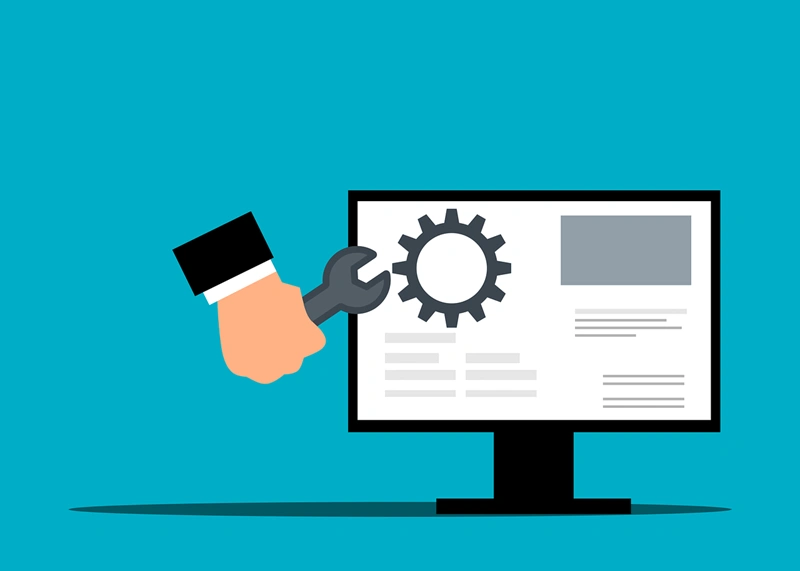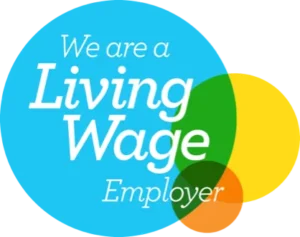Looking to adopt a more flexible and results-driven approach to project delivery? Agile planning helps teams manage changing priorities, speed up releases, and stay aligned with business goals. In this guide, you’ll learn what Agile planning is, how to implement it, and how to choose the right framework, Scrum, Kanban, or a hybrid.
If you want to implement an Agile approach, you first need to understand the Agile manifesto and the role Agile planning plays in project management. Here’s how to start the Agile planning process so you can move the needle toward Agile software development.
What Is Agile Planning?
Agile planning is a flexible, iterative project management approach used to break work into smaller deliverables. It allows for continuous feedback, team collaboration, and faster response to change, making it ideal for dynamic software development environments.
Agile planning is a project management style that allows modifications during development cycles based on end-user experiences. It’s a component of Agile methodology and Project to Product philosophy.
In traditional project management, developers create a plan, complete the project, and improve the product later. With an Agile approach, the product develops through ongoing iterations and continuous releases focused on customer feedback.
The Agile method differs from Waterfall, which uses a linear approach to software development. In Waterfall, each phase requires a deliverable before moving on to the next phase. Waterfall is rigid, while Agile is adaptable.
See how we implemented Agile planning for a Global Telecoms Leader
Agile Planning vs Traditional Project Management
With an Agile approach, software development becomes an iterative, customer-driven process rather than a rigid, one-time execution. Instead of waiting until the end of a project to deliver value, teams use Agile planning to break work into short cycles, called sprints that allow for regular feedback and continuous improvement. This helps teams release working software frequently, adapt quickly to user input, and prioritize the features that matter most to customers.
| Feature | Agile Planning | Traditional (Waterfall) Planning |
|---|---|---|
| Approach | Iterative and flexible | Linear and sequential |
| Customer Feedback | Continuous throughout process | Collect after delivery |
| Planning Style | Adaptive | Fixed upfront |
| Delivery | Incremental (sprints/releases) | One final release |
| Responsiveness to Change | High | Low |
Agile Planning Principles and Values
Agile methodology is a set of values and principles guiding lean software development. It’s based on the Agile Manifesto, which prioritises four core values:
- Individuals and interactions over processes and tools
- Working software over comprehensive documentation
- Customer collaboration over contract negotiation
- Responding to change over following a plan
These values shape the Agile mindset of collaboration, continuous learning, and adaptability. The Agile Manifesto’s 12 principles guide the development process. Concepts include prioritising customer satisfaction, delivering working software regularly, welcoming new requirements, and maintaining a sustainable pace of work. Effective Agile coaching helps teams understand this approach and adopt these principles.
Following Agile methodology provides a framework for iterative delivery that helps teams respond quickly to changes and deliver high-quality software.
Agile Planning Concepts: Releases, Sprints & User Stories
Releases in Agile Planning
In Agile planning, a release represents a high-level delivery milestone that groups multiple sprints or iterations. It defines when a set of user features or product enhancements will be delivered to end users.
Each release is planned based on product goals, user priorities, and technical feasibility. Agile teams use the product backlog to determine which features should be included, prioritizing those with the highest value. Unlike traditional methods, Agile releases are flexible and can be adjusted as the team gathers feedback or encounters new requirements.
Key goals of a release plan:
- Align the team around a shared product objective
- Set expectations for stakeholders on delivery timelines
- Group user stories into deliverable increments
- Measure progress using working software
Effective release planning bridges the gap between long-term product vision and short-term execution.
What Is a Sprint in Agile?
A sprint is a short, time-boxed development cycle, typically lasting 1 to 4 weeks, where Agile teams focus on delivering a working increment of the product. Each sprint begins with sprint planning, during which the team selects a set of prioritized user stories from the product backlog.
Sprints are at the heart of Agile planning because they:
- Create regular delivery intervals
- Promote team focus and accountability
- Allow for faster customer feedback
- Reduce risk by addressing complexity in smaller chunks
At the end of each sprint, teams hold a sprint review to demonstrate completed work and gather feedback, followed by a retrospective to improve processes in the next cycle. Sprint planning encourages continuous improvement while keeping development aligned with business goals.
User Stories and Iteration Goals
User stories are short, simple descriptions of a feature or requirement written from the perspective of the end user. They help teams understand what needs to be built and why, focusing development efforts on user value.
A standard user story format is:
As a [user role], I want [goal] so that [benefit].
In each iteration (or sprint), the team selects a group of user stories that align with the sprint goal. These become the iteration goals, which serve as a guide for what the team should accomplish during that sprint.
Benefits of using user stories in Agile planning:
- Keep the team focused on user outcomes
- Simplify communication between business and technical stakeholders
- Allow for easier estimation and prioritization
- Support incremental delivery
By breaking down features into user stories, teams can better estimate work, track progress, and adapt plans based on feedback or changes in priorities.
The 5 Key Levels of the Agile Planning Process
There are five levels of agile planning: vision, roadmap, release, iteration, and daily standup.
- Vision—sets the direction for the entire organisation
- Roadmap—maps out the steps to take to achieve the vision
- Release—segments the initiatives into manageable sprints within a timeframe
- Iteration—focuses on the work to be done within each sprint
- Daily standup—monitors progress and identifies any obstacles
At the end of each iteration, the team reviews the completed work and adjusts the vision and roadmap as necessary. Members then cycle back through the levels until they finish the product.
Let’s look at how the five levels of Agile planning come together as a process.
Agile Vision
The vision is the big-picture view of what your team wants to achieve. It should be clear, attainable, and aligned with your company’s goals. Starting with the vision in your planning meeting ensures everyone is working towards the same outcome. After you define your intention, you can break it down into smaller goals and objectives.
Agile Roadmap
The roadmap is a high-level view of your team’s required work to achieve the product vision. It helps developers understand what needs to be accomplished and when. Sprints, typically two to four weeks long, make up the roadmap of releases. Each sprint has a specific milestone to reach within that timeframe. The roadmap is a flexible document you can update as needed.
Agile Release
The release is a plan outlining when the team will deliver each feature to improve the working software. Developers use the product backlog to prioritise the most important deliverables and meet impending deadlines. Release planning happens at the beginning of each sprint and adjusts based on changes and priorities.
Agile Iteration
The iteration (or sprint) is a time-boxed period of product development in which a team works on a subset of deliverables from the product backlog. Developers select the deliverables, estimate the required effort, and create a step-by-step plan to optimise work completion. Iteration planning helps your team focus on delivering value in increments and reduces the risk of scope creep.
Agile Daily Standup
The daily standup is a short meeting where each team member reports on their progress from the previous day. Each person answers three questions:
- What did you do yesterday?
- What will you do today?
- Are there any obstacles in your way?
The daily standup aims to keep stakeholders up to date on the product and resolve potential issues.
Agile planning is a cyclical process. Teams iterate through these levels continuously until the product meets customer needs and strategic goals.
Agile Planning Frameworks: Scrum, Kanban & Scrumban
To implement Agile planning effectively, teams often adopt a project management framework that aligns with their structure, priorities, and workflow. Below, we explore the most popular Agile frameworks, Scrum, Kanban, and Scrumban and how they support planning and delivery.
Scrum Framework
Scrum is a structured Agile framework including roles, artifacts, and ceremonies.
Roles in Scrum involve the product owner, development team, and Scrum Master. The product owner takes care of the product backlog, and the developers implement the features. The Scrum Master facilitates the entire process. For example, they may create a Community of Practice (CoP) with other Scrum Masters to exchange ideas about increasing team productivity.
Scrum artifacts include the product backlog, sprint backlog, and increment. The product backlog lists all the features the team needs to add. Work planned for the iteration is in the sprint backlog. The increment is the deliverable meeting the Definition of Done (DoD).
The ceremonies in Scrum are sprint planning, daily standup, and sprint review. Sprint planning covers what the team will work on in a sprint, and the daily standup is the progress report. In the sprint review, the team goes over completed work and collects feedback.
Kanban Framework
Kanban is a more flexible Agile framework involving boards, work in progress (WIP), and continuous flow.
Kanban boards help businesses visualise and manage their workflows. Cards represent work items on boards, and columns divide those boards into different stages of the process. For example, a board might have columns for “To Do,” “In Progress,” and “Done.”
Setting limits on WIP ensures the team gives each task the attention it deserves. With a reduced amount of WIP, businesses can avoid bottlenecks and become more efficient. By identifying what the team needs to do and what they’re already working on, Kanban boards help Agile teams prevent duplication and promote a continuous flow of work.
Scrumban: The Hybrid Agile Planning Framework
Scrumban combines Scrum’s structured planning with Kanban’s flexible workflow. It’s ideal for teams in transition or environments with variable work cycles.
Use Scrumban if:
- Your team needs some structure but avoids rigid sprints
- You’re moving from traditional to Agile gradually
- Projects have changing scopes or ongoing priorities
Scrumban supports iterative planning while maintaining continuous delivery, making it a practical entry point into Agile planning for many organisations.
Choosing the Right Agile Planning Framework
Choosing the right Agile planning framework depends on your team’s structure, project complexity, and how much flexibility or control you need during delivery. Below are key considerations to help you decide between the most commonly used Agile frameworks: Scrum, Kanban, or a hybrid approach like Scrumban.
Which Agile planning framework should I use?
Use Scrum if:
- You work on projects with clear timelines and defined deliverables
- Your team thrives with structured roles and ceremonies
- You need to improve predictability and velocity tracking
- Cross-functional collaboration is a priority
Scrum works best for organisations aiming to deliver high-value features on a regular cadence, with dedicated team roles (Scrum Master, Product Owner, Developers) and time-boxed iterations (sprints). It supports strong governance and is ideal for teams scaling Agile across departments.
Use Kanban if:
- Your work is continuous and unstructured, such as maintenance or ops
- You want a visual system to manage flow and limit work in progress
- Teams prefer flexibility over fixed roles or sprint cycles
- There’s a focus on incremental improvements over deadlines
Kanban is well-suited for teams needing to manage work dynamically. It offers visual clarity, fast adaptation, and minimal overhead — great for IT support teams, DevOps, or distributed teams.
Use Scrumban (Hybrid) if:
- You want the discipline of Scrum with the flexibility of Kanban
- Teams are transitioning from one framework to another
- Your team needs structure but isn’t ready for strict sprints or roles
- You have variable-length tasks and evolving priorities
Scrumban combines Scrum’s planning structure with Kanban’s workflow visualisation and flexibility. It’s ideal for maturing Agile teams or organisations experimenting with Agile before fully committing to a framework.
Not sure which model fits your team? Talk to our Agile coaches for a customised Agile planning assessment.
Tip for IT Leaders
Frameworks are tools, not rules.
The most effective Agile teams customise these methods to suit their culture, delivery cycles, and customer needs. It’s not about following a textbook approach it’s about aligning Agile planning with your strategic objectives, improving team autonomy, and consistently delivering customer value.
If you’re exploring frameworks like Scrum or Kanban, our Agile team can help tailor the right fit for your organisation.
Need Help With Agile Planning?
The best part about Agile planning is adapting it to fit your business needs.
Some people use a mix of Scrum and Kanban. Others incorporate Extreme Programming (XP), which emphasises the technical aspects of the Agile software development lifecycle.
Whether you’re scaling Agile across departments or just getting started, our team can guide you through Agile planning best practices tailored to your organisation.
Whatever path you choose, Catapult CX can help with Agile project management and planning for all your teams, not just IT. If you are interested in developing agile planning practices for your organisation, contact us now.
























